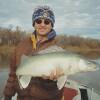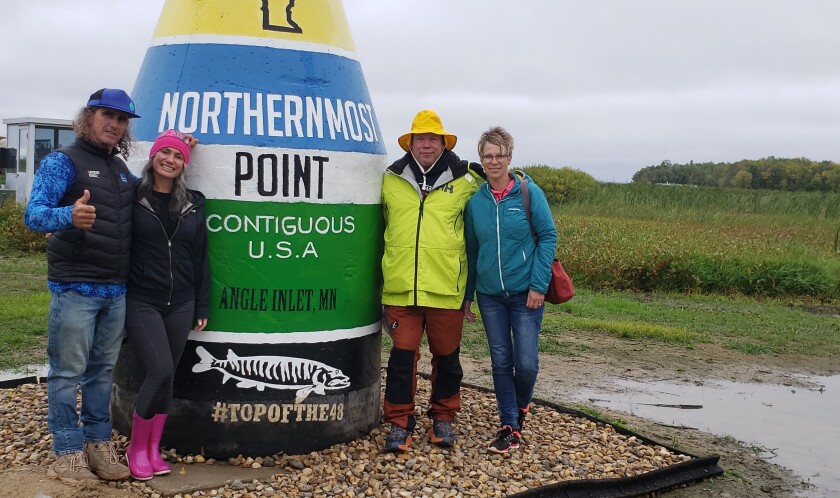And just like that – poof! – summer is over.
How did that happen?
ADVERTISEMENT
It happens every year, of course – thanks, Captain Obvious – but this year’s shift to fall seemed to happen more abruptly than usual. Harbingers of summer such as the Minnesota Fishing Opener and the morel mushroom bonanza we found over Memorial Day Weekend seem like just a couple of weeks ago, but they’re long since in the rearview mirror.

Signs of fall are everywhere. For proof, look no further than hunting seasons that are already underway or about to begin in a matter of days.
In North Dakota, hard-core Canada goose hunters have been going afield since Aug. 15, the archery deer season opened at noon Friday, Aug. 30, pronghorn bow season opened Aug. 30, and other rites of fall – small game, waterfowl and pheasant – aren’t far behind.
Jesse Kolar, the Game and Fish Department’s upland game supervisor, offered a in a video that’s available on the Herald website at grandforksherald.com and scrolling down to the Northland Outdoors section. Bottom line: the outlook is pretty good.
Not to be forgotten, of course, are Minnesota’s bear season, which opens Sunday, Sept. 1, and Minnesota’s archery deer season, which opens Saturday, Sept. 14, along with the grouse season.
By calendar, at least, fall doesn’t officially begin until Sunday, Sept. 22, but for all practical purposes, it’s already here.
In my world, at least, that’s not necessarily a bad thing. As with most people who enjoy the outdoors, fall is my favorite time of the year.
ADVERTISEMENT
So much to do, so little time.
UND-NDSU sporting clays shoot
Looking ahead to October – my favorite month of the year – students in the Natural Resources and Fish and Wildlife programs at UND and North Dakota State University again will hold a sporting clays shoot to coincide with the Fighting Hawks-Bison football game set for Saturday, Oct. 5, at the Fargodome.
The UND-NDSU sporting clays shoot will be held from 9 a.m. to noon Oct. 5 at the Horace Shooting Park in Horace, North Dakota. Ryan Taylor, director of public policy at Ducks Unlimited’s Great Plains Region Office in Bismarck, is hosting the event.
Because last year’s UND-NDSU football game was in Grand Forks, the inaugural sporting clays shoot was held at the Dakota Sporting Clays Range west of town.
The UND squad – members of the UND Chapter of The Wildlife Society – won last year’s sporting clays event, during the competition.
Here’s hoping for a repeat.
ADVERTISEMENT
State Fair nuggets
I haven’t been to the Minnesota State Fair in several years, but I always think of the “Great Minnesota Get-Together” as the unofficial end to summer.
The State Fair, which began Aug. 22, continues through Monday, Sept. 2 – Labor Day.
The Minnesota Department of Natural Resources Building, built in 1934 at a cost of $73,000, according to the DNR, is always a highlight during my State Fair visits. The DNR fish pond this year focuses on “lesser-known native fish,” according to one of the daily email updates the DNR sends to media outlets during the State Fair.
“These fish, many of which are commonly called rough fish, are garnering renewed appreciation for the important role they play in aquatic ecosystems and the health of rivers and lakes,” the DNR said. “Research is underway to track the populations of these species, with initial results expected in the latter part of 2024. The Minnesota DNR has also formed a work group with members of conservation organizations, members of the bowfishing community and interested stakeholders to identify conservation strategies for these lesser-known native fish.”
is available via the Live Fish Cam on the DNR’s YouTube channel. It’s definitely worth checking out.
For the past several years, a large collage on the side of the DNR Building at the State Fair has featured a photo of Jack Jensen, the first manager of the Roseau River Wildlife Management Area in northwest Minnesota. Known by locals as “The Bog,” Roseau River WMA is about as far away as you can get from the State Fairgrounds and still be in Minnesota.
Jensen, who died in 2004 at the age of 90, was manager of Roseau River WMA from its founding in the late 1940s – they were known as “refuge patrolmen” in those days – until retiring in 1978.
ADVERTISEMENT
Every year, Jack’s son, Scott, shares a photo from the State Fair of himself standing next to the collage and this year is no exception. The photo, which I’m sure was taken before either of us were born, always strikes a note of nostalgia, as my dad, who retired in 1976 and died in 1992, also worked with Jack at Roseau River WMA.
Those were the days.










